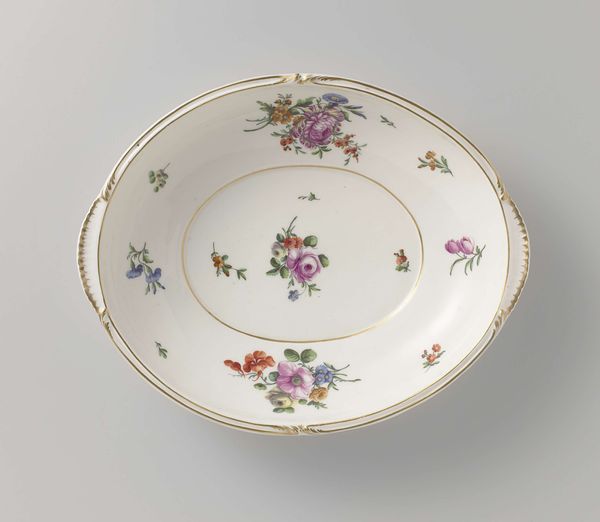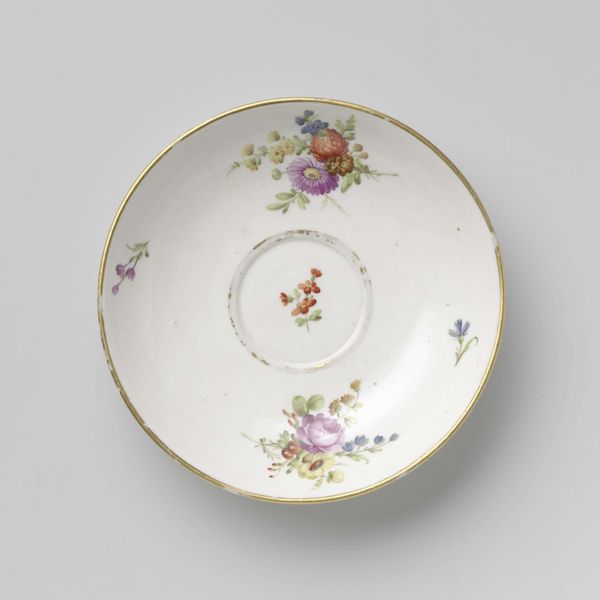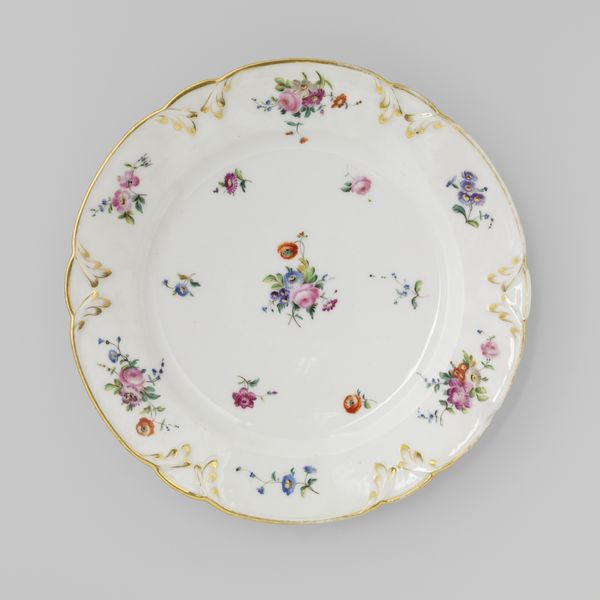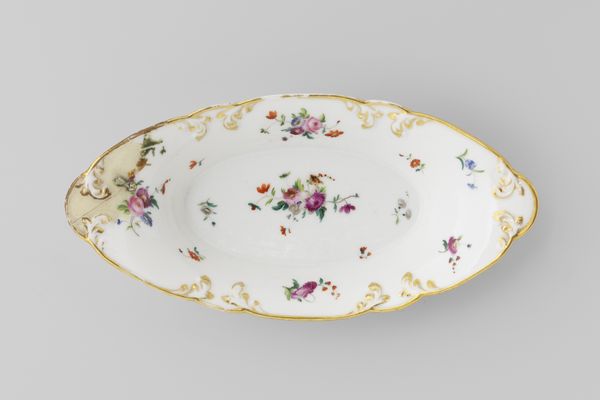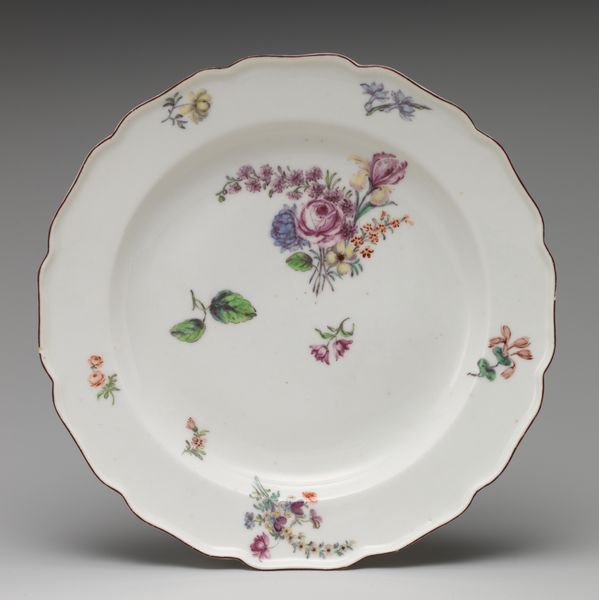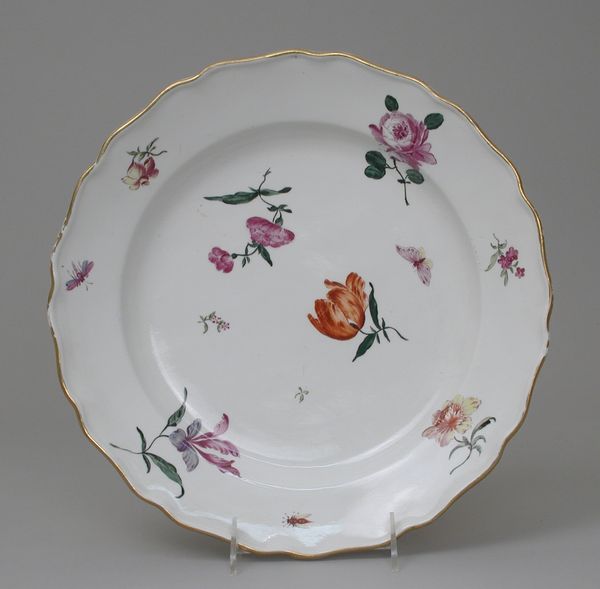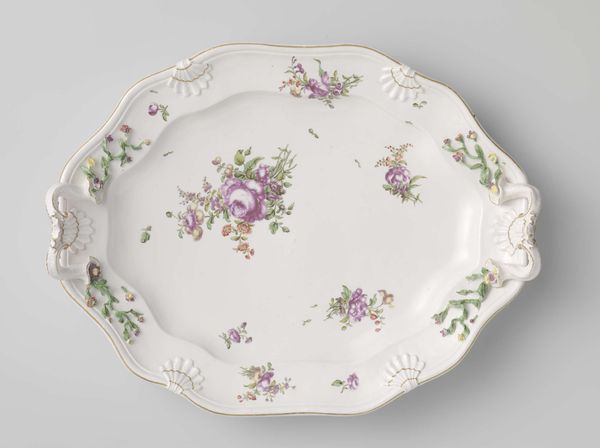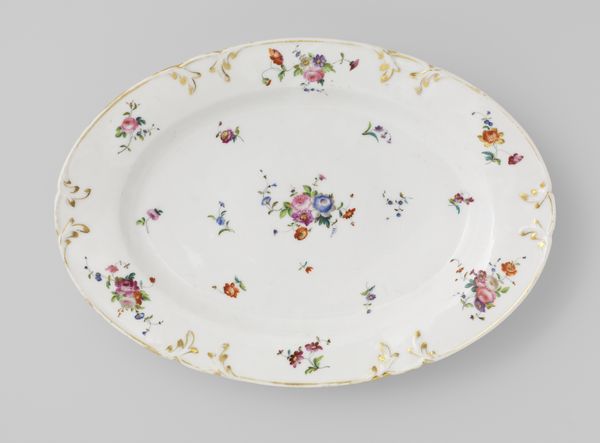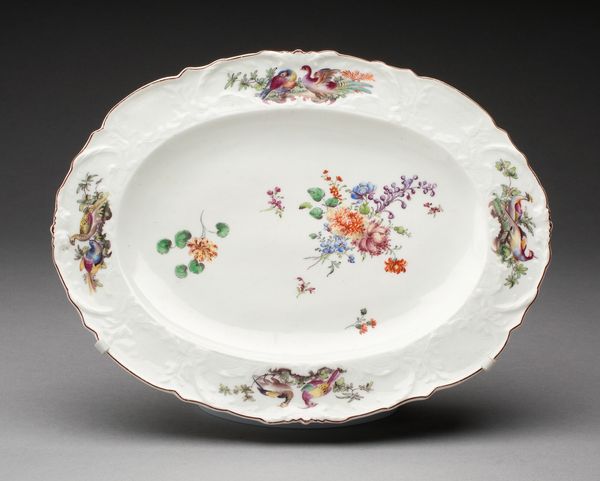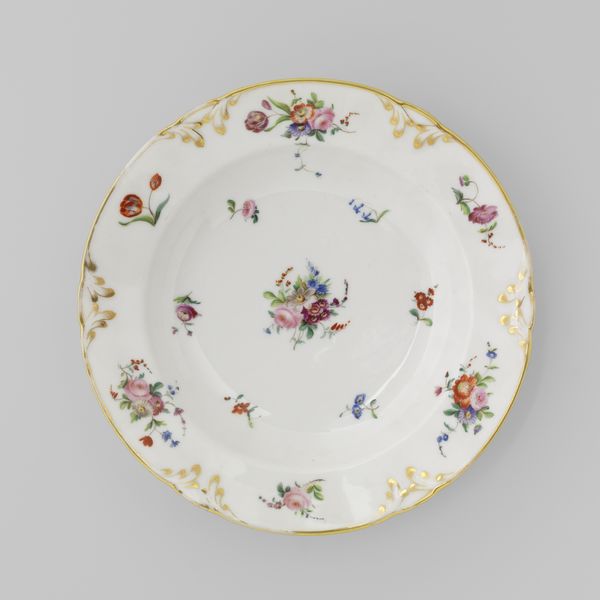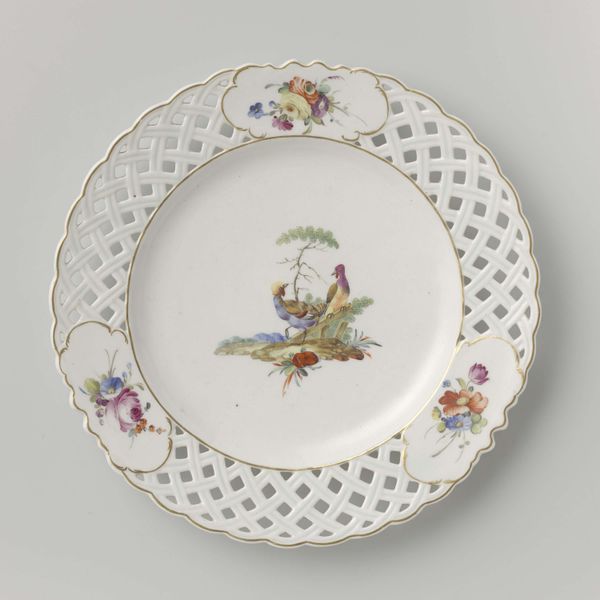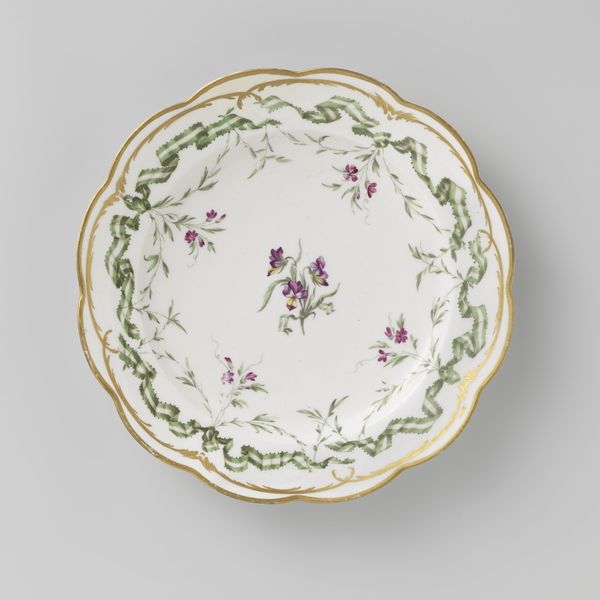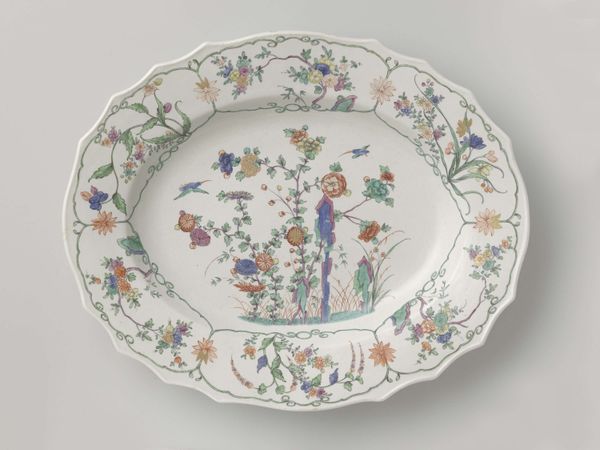
Dimensions: height 4 cm, width 37 cm, depth 25 cm
Copyright: Rijks Museum: Open Domain
This porcelain plate was made in Loosdrecht and is adorned with floral motifs. Central to the design is the tulip, a symbol that once ignited “Tulip Mania” in the Dutch Golden Age. In the 17th century, the tulip was more than just a flower; it was a feverish obsession, a speculative bubble reflecting desires, anxieties, and the intoxicating allure of wealth. Yet, even before this Dutch frenzy, flowers carried complex symbolic weight, often linked to mortality, beauty, and the ephemeral nature of life, echoing in vanitas paintings across Europe. The tulip's ascent into financial madness highlights how cultural symbols can become entangled with collective fantasies and economic forces. This plate serves as a reminder of the cyclical nature of human obsessions, how symbols gain power, and how collective memory reshapes our interpretation of even the simplest forms.
Comments
No comments
Be the first to comment and join the conversation on the ultimate creative platform.
